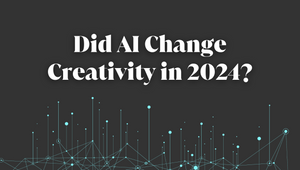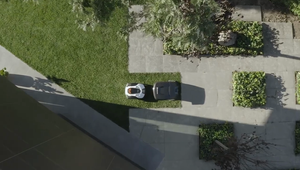
When It Comes to Accessibility, Every Campaign Counts

At the end of March, a cross-agency Ad Accessibility Taskforce, led by the European Association of Communication Agencies (EACA), released a new guide to improve accessibility across the ad industry. Created by 20 peers from agencies across UK and Europe who want to make advertising accessible to all, the guide offers practical steps for agencies to improve accessibility at a strategic level.
As chair of the Ad Accessibility Taskforce, I want to make sure that accessibility is a fundamental part of the creative process. For too long accessible advertising has been an afterthought and if the industry wants to remain as a champion for creativity, then inclusivity must be front and centre.
Accessible advertising not just about compliance - it’s about effectiveness and equity. It has a real impact on growth and more importantly, it aligns with the growing consumer demand for ethical and equitable representation.
Accessibility isn’t a nice to have, it’s a business imperative
Only a minority (17%) of ads have accessible content and yet Research, from the University of Oxford, shows that inclusive advertising boosts brand loyalty, increases market share, and drives innovation.
According to EU research, one in four Europeans lives with a disability, and by failing to design accessible content, most adverts ignore 25% of their audiences. That’s missing out on a diverse range of consumers while failing to build brand trust.
By designing for accessibility from the start, brands can reach more people, foster deeper engagement, and translate this into brand equity and consumer spending. By demonstrating a genuine commitment to inclusion, brands can better engage their consumers and, if only 17% of ads are actually accessible, any brand that can enhance their accessibility will stand out
Setting the Gold Standard
Accessibility is often overlooked in the creative process and to counter this, the EACA’s Mini Guide outlines practical steps to integrate accessibility into advertising strategies.
Some key takeaways include:
Systemise accessibility – Make it a core part of campaign planning, not an add-on.
Go beyond compliance – Aim for gold-standard accessibility, not just the bare minimum.
Inclusive storytelling – Represent disabled and neurodiverse people authentically in content and creative execution. Involve these communities in your work.
Accessible formats – Ensure all media - video, audio, and digital - meets accessibility standards (e.g., subtitles, alt text, high-contrast design).
Every campaign counts
The guide is a starting point, but real change requires industry-wide commitment and for everyone across the industry to work together to embed accessibility into every campaign.
Making accessibility the norm means that inclusion needs to be by default and design. We can’t continue to allow accessible content to languish at 17% of all ads, appearing as the exception instead of the rule.
The time for accessible advertising is now. With every campaign and every client.















